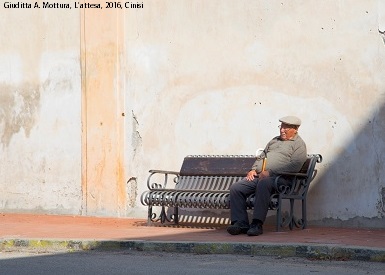To translate or not to translate dialects in subtitling? The case of Pif’s La mafia uccide solo d’estate
DOI:
https://doi.org/10.54103/2035-7680/19186Parole chiave:
Audiovisual translation; subtitling; dialects; Mafia; identityAbstract
The difficulty of translating dialects has been extensively studied over the years, firstly by scholars who focused on the (un)translatability of dialects in literature, and more recently by an increasing number of academics who have been investigating the issue within the field of audiovisual translation, both in dubbing and in subtitling. This study aims to analyse the strategies used in subtitling to translate into English the Sicilian dialect spoken in the Italian film La mafia uccide solo d’estate, directed by Pif in 2013. In this film, the use of dialect is not simply a tool to indicate the geographical origins of the characters, but it is exploited to construe their identity. Indeed, language variation is a device used purposefully to distinguish the ‘good’ characters from the ‘bad’ ones, and, as such, it is a means of identification. The results of the analysis will also be compared to those of previous studies conducted in this research area. Finally, the paper will attempt to provide some potential solutions that might be adopted in the subtitling of similar products, based on previous studies performed by the author on the original dialogues of some Hollywood films.
Metriche
Riferimenti bibliografici
Altano, Brian. “Translating Dialect Literature: The Paradigm of Carlo Emilio Gadda.” Babel, vol. 34, no. 3, 1988, pp. 152-156.
Associazione Cosa Vostra. “Guerre per il potere, vittime innocenti e la passione per Ivana Spagna.” Domani, 18 Jun. 2021. www.editorialedomani.it/fatti/blog-mafie-cacciatore-sabella-guerre-per-potere-vittime-innocenti-passione-per-ivana-spagna-lzb5n7w4. Accessed 6 Sept. 2022.
Balma, Philip. “From Standardization to Dialect Compilation. A Brief History if Italian Dialect Poetry in English Translation.” Translation Studies Journal, vol. 3, no. 1, 2011, pp. 1-13.
Bolzoni, Attilio. “Nomen omen, l’anagrafe criminale.” Repubblica, 5 Jul. 2015. www.repubblica.it/cronaca/2015/07/05/news/nomen_omen_l_anagrafe_criminale-118370597/. Accessed 6 Sept. 2022.
Bonaffini, Luigi. “Italian Dialects from Common Speech to Literary Languages.” Italiana, vol. 9, 2000, pp. 289-303.
---. “Traditori in provincia. Appunti sulla traduzione dal dialetto.” Italica, vol. 72, no. 2, 1995, pp. 209-227.
---. “Translating Dialect Literature.” World Literature Today, vol. 71, no. 2, 1997, pp. 279-288.
Bonsignori, Veronica. “Desi/Brit-Asian in Italian Dubbing.” Papers from the 24th AIA Conference. Challenges for the 21st Century: Dilemmas, Ambiguities, Directions, Vol. 2, edited by Gabriella Di Martino, et al., Edizioni Q, 2009, pp. 141-49.
---. “The transposition of cultural identity of Desi/Brit-Asian in Italian dubbing.” Audiovisual Translation across Europe: An Ever-changing Landscape, edited by Silvia Bruti and Elena Di Giovanni, Peter Lang, 2012, pp. 15-33.
Bonsignori, Veronica, and Silvia Bruti. “Representing varieties of English in film language and dubbing: the case of Indian English.” inTRAlinea. Special Issue: Across Screens Across Boundaries, edited by Rosa Maria Bollettieri Bosinelli et al., 2014. www.intralinea.org/specials/article/representing_varieties _of_english_in_film_language_and_dubbing. Accessed 6 Sept. 2022.
---. “A Linguistic Analysis of Dubbing: The Case of Bend It Like Beckham.” Threads in the Complex Fabric of Language. Linguistic and Literary Studies in Honour of Lavinia Merlini Barbaresi, edited by Marcella Bertuccelli Papi et al., Felici Editore, 2008, pp. 509-21.
Bonsignori, Veronica, Silvia Bruti and Annalisa Sandrelli. “Paolo Virzì’s glocal comedy in English subtitles: an investigation into linguistic and cultural representation.” Perspectives, vol. 27, no. 2, 2019, pp. 283-298.
Brenner, Koloman, and Irmeli Helin, editors. inTRAlinea. Special Issue: The Translation of Dialects in Multimedia III, 2016. www.intralinea.org/specials/ medialectrans3. Accessed 6 Sept. 2022.
Bruti, Silvia. “From the US to Rome passing through Paris. Accents and dialects in The Aristocats and its Italian dubbed version.” inTRAlinea. Special Issue: The Translation of Dialects in Multimedia, edited by Michela Giorgio Marrano et al., 2009. www.intralinea.org/specials/article/From_the_US_to_Rome_passing_through_Paris. Accessed 6 Sept. 2022.
Bruti, Silvia, and Irene Ranzato. “Italian dialetti in audiovisual translation: Perspectives on three quality Tv series.” Ragusa e Montalbano. Voci del Territorio in Traduzione Audiovisiva, edited by Massimo Sturiale et al., Fondazione Cesare e Doris Zipelli-Euno Edizioni, 2019, pp. 341-364.
Bruti, Silvia, and Gianmarco Vignozzi. “Voices from the Anglo-Saxon World: Accents and Dialects across Film Genres” in Status Quaestionis, vol. 8, 2016, pp. 43-72.
Buonocore, Eleonora. “Why Could La tata Only Be Italian American? Analyzing the Cultural Complexity Behind the Italian Dubbing Adaptation of The Nanny.” Translating for (and from) the Italian Screen. Dubbing and Subtitles, edited by Philip Balma and Giovanni Spani, Bordighera Press, 2020, pp. 57-86.
Chiaro, Delia. “Where have all the varieties gone? The vicious circle of the disappearance act in screen translations.” Dialect for all Seasons, edited by Irmeli Helin, Nodus Publikationen, 2008, pp. 9-25.
De Meo, Mariagrazia. “Subtitling dialect and culture-bound language.” Testi e Linguaggi, vol. 4, 2010, pp. 19-36.
---. “Subtitling dialect in Inspector Montalbano and Young Montalbano.” inTRAlinea. Special Issue: The Translation of Dialects in Multimedia IV, edited by Klaus Geyer and Margherita Dore. 2020. www.intralinea.org/specials/article/2466. Accessed 6 Sept. 2022.
Dore, Margherita. “Target Language Influences over Source Texts: A Novel Dubbing Approach in The Simpsons, First Series.” Translating Voices Translating Regions, edited by Nigel Armstrong and Federico Federici, Aracne, 2006, pp. 137-156.
Dore, Margherita. “Revoicing Otherness and Stereotypes via Dialects and Accents in Disney’s Zootopia and its Italian Dubbed Version.” inTRAlinea. Special Issue: The Translation of Dialects in Multimedia IV, edited by Klaus Geyer and Margherita Dore, 2020. www.intralinea.org/specials/article/revoicing_otherness_and_stereotypes. Accessed 6 Sept. 2022.
---. “Subtitling Catarella: Camilleri’s Humour Travels to the UK and the USA.” Volume of Proceedings of TRANSLATA II International Conference on Translation and Interpreting Studies, Peter Lang, 2017, pp. 43-51.
Dudek, Anna. “The Untranslatability of Dialects in Subtitling. An Analysis of Translation Techniques Used in the English Subtitles to The Peasants.” Anglica Wratislaviensia, vol. 56, 2018, pp. 295-307.
DuVal, John. “Translating the Dialect: Miller Williams' Romanesco.” Translation Review, vol. 32-33, 1990, pp. 27-31.
Federici, Federico, editor. Translating Dialects and Language Minorities. Challenges and Solutions. Peter Lang, 2011.
Ferrari, Chiara. Since When is Fran Drescher Jewish? Dubbing Stereotypes in The Nanny, The Simpsons, and The Sopranos. University of Texas Press, 2010.
---. “Translating Stereotypes: Local and Global in Italian Television Dubbing.” Translating Voices Translating Regions, edited by Nigel Armstrong and Federico Federici, Aracne, 2006, pp. 123-141.
Galassi, Gianni G. “La Norma Traviata.” Il Doppiaggio. Trasposizioni Linguistiche e Culturali, edited by Raffaella Baccolini et al., CLUEB, 1994, pp. 61-70.
Gaudenzi, Cosetta. “Regionalized Voices in Film: Fellini’s Amarcord in English.” Translating Voices Translating Regions, edited by Nigel Armstrong and Federico Federici, Aracne, 2006, pp. 93-108.
Geyer, Klaus, and Margherita Dore, editors. inTRAlinea. Special Issue: The Translation of Dialects in Multimedia IV, 2020. www.intralinea.org/specials/ medialectrans4. Accessed 6 Sept. 2022.
Giorgio Marrano, Michela, et al., editors. inTRAlinea. Special Issue: The Translation of Dialects in Multimedia, 2009. www.intralinea.org/specials/medialectrans. Accessed 6 Sept. 2022.
Gregory, Michael, and Susanne Carroll. Language and Situation: Language Varieties and Their Social Context. Routledge, 1978.
Grimaldi, Mirko. “Analisi di soprannomi mafiosi: caratterizzazione, strutturazione, tipologia e funzionalità.” Studi di sociolinguistica giudiziaria italiana (parte III), Atti del XXIX Congresso Internazionale della SLI (Malta 23-25 Novembre 1995), edited by Patrizia Bellucci, et al., Bulzoni, 1998, pp. 226-268.
Hargan, Noeleen. “The foreignness of subtitles: the case of Roma, città aperta in English.” Translating Voices Translating Regions, edited by Nigel Armstrong and Federico Federici, Aracne, 2006, pp. 53-72.
King, Jeoff. Film Comedy. Wallflower Press, 2002.
Koch, Günther. “Sprachliche Varietäten und Variationen in der Science-Fiction – mit Focussierung auf das Bairische.” inTRAlinea. Special Issue: The Translation of Dialects in Multimedia IV, edited by Klaus Geyer and Margherita Dore, 2020. www.intralinea.org/specials/article/sprachliche_varietaeten_und_variationen_in_der_science_fiction. Accessed 6 Sept. 2022.
La mafia uccide solo d’estate. Directed by Pif, Rai Cinema, 2013.
Lippi-Green, Rosina. English with an Accent: Language, Ideology, and Discrimination in the United States. Routledge, 1997.
Magazzù, Giulia. “’Dottore, dottore!’ Subtitling dialects and regionalisms: the case of Inspector Montalbano.” Translating Audiovisuals in a Kaleidoscope of Languages, edited by Montse Corrius et al., Peter Lang, 2019, pp. 129-146.
Magazzù, Giulia. “’Montalbano sono!’ Conveying the Identity of Sicily Through Subtitles: The Case of Inspector Montalbano.” Translatologica-A Journal of Translation, Language, and Literature, vol. 2, 2018, pp. 112-125.
Mével, Pierre-Alexis. “Traduire La Haine: Français des banlieues et sous-tirage.” Translating Regionalised Voices in Audiovisuals, edited by Federico Federici, Aracne, 2009, pp. 263-279.
---. “On the use of verlan to subtitle African American Vernacular English into French: transnational hybridity.” inTRAlinea. Special Issue: Across Screens Across Boundaries, edited by Rosa Maria Bollettieri Bosinelli et al., 2014. www.intralinea.org/specials/article/on_the_use_of_verlan_to_subtitle_african_american_vernacular_english_into_f. Accessed 6 Sept. 2022.
Minutella, Vincenza. “British dialects in animated films: The case of Gnomeo & Juliet and its creative Italian dubbing.” Status Quaestionis. Language, text, Culture, 11, 2016, pp. 222-259.
---. (Re)Creating Language Identities in Animated Films. Dubbing Linguistic Variation. Palgrave, 2021.
Nadiani, Giovanni, and Chris Rundle, editors. inTRAlinea. Special Issue: The Translation of Dialects in Multimedia II, 2012. www.intralinea.org/specials/ medialectrans2. Accessed 6 Sept. 2022.
Parini, Ilaria. “The Changing Face of Audiovisual Translation in Italy.” The Changing Face of Translation, edited by Ian Kemble, University of Portsmouth, 2009, pp. 19-27.
Parini, Ilaria. “Dagos, Mobsters, Cooks, Latin Lovers, Saints and Whores: Italians in Spike Lee's Summer of Sam.” The Mediterranean as seen by insiders and outsiders, edited by Antonio C. Vitti and Anthony Julian Tamburri, Bordighera Press, 2016, pp. 159-189.
---. “‘I’m a man. I Got a Lot of Hormones in My Body’: The Italian Man in Kasdan’s I Love You to Death.” The Representation of the Mediterranean World by Insiders and Outsiders, edited by Antonio C. Vitti and Anthony Julian Tamburri, Bordighera Press, 2018, pp. 169-188.
---. Italian-American Gangsterspeak. Linguistic Characterization of Italian- American Mobsters in Hollywood Cinema and Italian Dubbing. LAP, 2013.
---. “Sleeping with the Fishes. Italian Americans in Animation.” Reassessing Dubbing. Historical Approaches and Current Trends, edited by Irene Ranzato and Serenella Zanotti, John Benjamins, 2019, pp. 245-262.
---. “The Transposition of Italian American in Italian Dubbing.” In Translating Regionalised Voices in Audiovisuals, edited by Federico Federici, Aracne, 2009, pp. 157-178.
---. “When Benny the Groin and Tommy the Tongue whacked Lou the Wrench. Cultural and Linguistic Representation of Italians in Mafia Comedies.” The Mediterranean Dreamed and Lived by Insiders and Outsiders, edited by Antonio C. Vitti and Anthony Julian Tamburri, Bordighera Press, 2017, pp. 103-127.
Petillo, Mariacristina. “Subtitling Mio cognato into English: How to reshape the identity of a territory.” US-China Foreign Language, vol. 10, no. 5, 2012, pp. 1196-1202.
Piazza, Salvatore. Mafia, linguaggio, identità. Centro di studi ed iniziative culturali Pio La Torre, 2010.
Raffi, Francesca. “Fellini’s Le Notti di Cabiria: How is dialect vs. Standard Italian rendered in English subtitles?” Recent trends in translation studies: An Anglo-Italian perspective, edited by Sara Laviosa et al., Cambridge Scholars Publishing, 2021, pp. 275-291.
---. “Language-Power Intersections in the Translation of Post-War Italian Cinema: Fellini’s Le Notti di Cabiria as Case Study.” Languaging Diversity Volume 3: Language(s) and Power, edited by Elena Di Giovanni and Francesca Raffi, Cambridge Scholars Publishing, 2017, pp. 156-187.
---. “Linguistic variation in Italian neorealist cinema: A multimodal analysis of subtitling.” Cogent Arts & Humanities, vol. 9, no. 1, 2022, doi: 10.1080/23311983.2022.2028977.
Ramos Pinto, Sara. “Film, dialects and subtitles: an analytical framework for the study of non-standard varieties in subtitling.” The Translator, vol. 24, no. 1, 2018, pp. 17-34.
Rosengrant, Judson. “Toads in the Garden: on Translating Vernacular Style in Eduard Limonov.” Translation Review, vol. 38-39, 1992, pp. 16-19.
Sánchez García, María Clemencia. “The orality features of Parlache in the novel Rosario Tijeras, by Jorge Franco, and their German and English translations.” inTRAlinea. Special Issue: The Translation of Dialects in Multimedia IV, edited by Klaus Geyer and Margherita Dore, 2020. www.intralinea.org/specials/article/the_orality_features_of_ parlache_in_the_novel_rosario_tijeras. Accessed 6 Sept. 2020.
Taylor, Christopher. “The Translation of Regional Variety in the Films of Ken Loach.” Translating Voices Translating Regions, edited by Nigel Armstrong and Federico Federici, Aracne, 2006, pp. 37-52.
TRAFILM, trafilm.net/Projects/Trafilm. Accessed 6 Sept. 2022.
Dowloads
Pubblicato
Come citare
Fascicolo
Sezione
Licenza

Questo articolo è soggetto a licenza Creative Commons Attribution-NonCommercial-NoDerivatives 3.0 International License.




